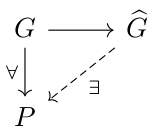A (not quite) perfect(oid) talk

Hi all! These are notes for a talk that I gave at a seminar on the work of Bhargav Bhatt , Matthew Morrow and Peter Scholze ( I and II ) organized in Copenhagen by Elden Elmanto . The aim of this talk was to introduce the main results of the two papers, and the categories \( \mathbf{QSyn} \) and \( \mathbf{QRSPerfd} \) that appear in the second paper. As the discussions went on for a long time, I managed only to achieve this second task, but I will post here the original notes for the talk, which might be used for a follow-up talk later on. Disclaimer : these notes have not been fully revised and most likely contain a wide variety of errors, misprints and imprecisions. Please use them at your own risk! Moreover, your comments are more than welcome! Introduction The first goal of the papers of Bhatt-Morrow-Scholze is to define two cohomology theories which can be used to recover étale , crystalline and de Rham cohomology . This is very interesting from the point of view of ...



